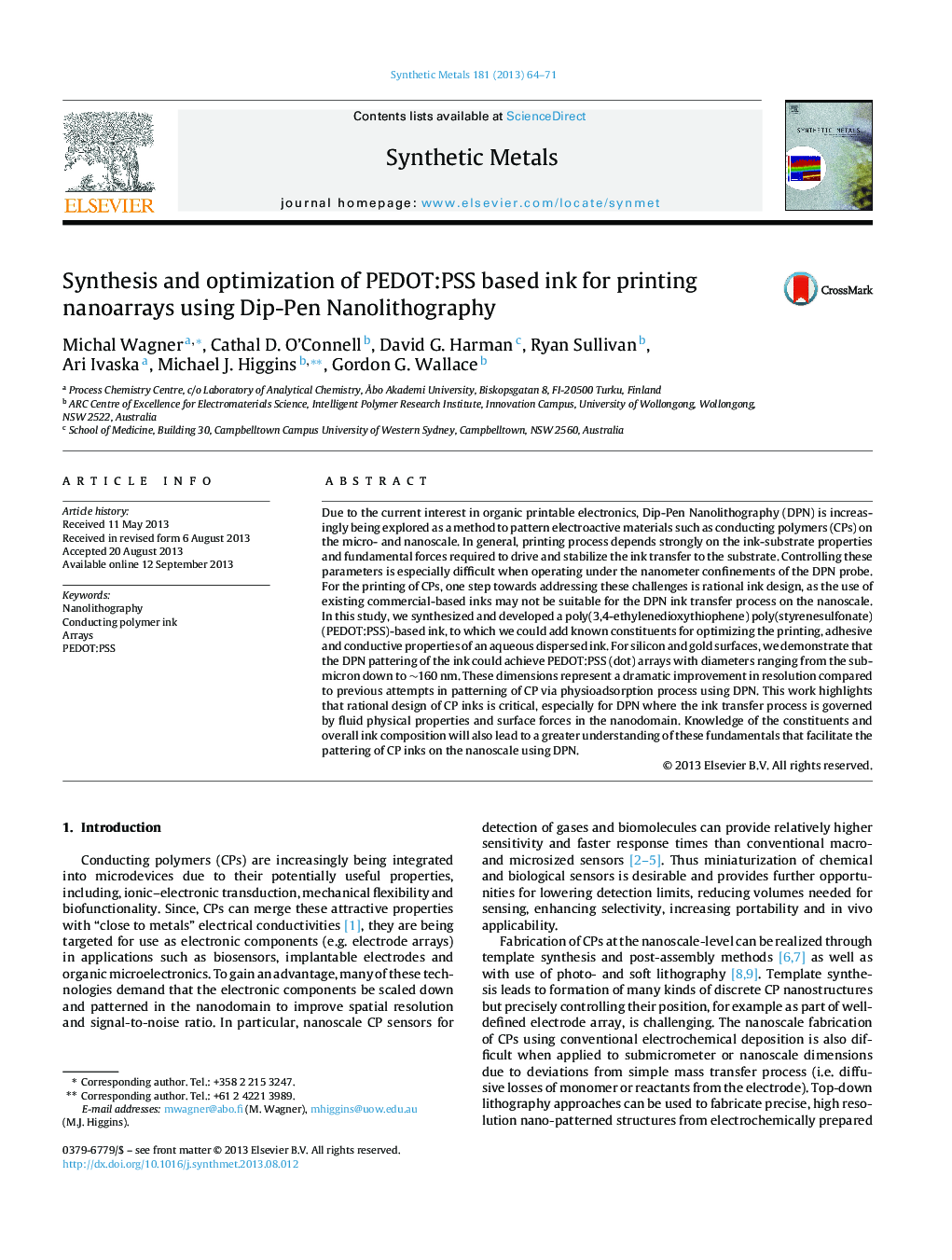| کد مقاله | کد نشریه | سال انتشار | مقاله انگلیسی | نسخه تمام متن |
|---|---|---|---|---|
| 1441208 | 1509395 | 2013 | 8 صفحه PDF | دانلود رایگان |

• We developed the ink based on PEDOT:PSS which can be printed by Dip-Pen Nanolithography.
• We were able to print PEDOT:PSS micro-arrays on silicon and gold substrates.
• We could use for nano-printing both commercial and homemade PEDOT:PSS.
• The smallest features that we could print were even approximately 160 nm wide.
• We introduced a method to improve water stability of PEDOT:PSS.
Due to the current interest in organic printable electronics, Dip-Pen Nanolithography (DPN) is increasingly being explored as a method to pattern electroactive materials such as conducting polymers (CPs) on the micro- and nanoscale. In general, printing process depends strongly on the ink-substrate properties and fundamental forces required to drive and stabilize the ink transfer to the substrate. Controlling these parameters is especially difficult when operating under the nanometer confinements of the DPN probe. For the printing of CPs, one step towards addressing these challenges is rational ink design, as the use of existing commercial-based inks may not be suitable for the DPN ink transfer process on the nanoscale. In this study, we synthesized and developed a poly(3,4-ethylenedioxythiophene) poly(styrenesulfonate) (PEDOT:PSS)-based ink, to which we could add known constituents for optimizing the printing, adhesive and conductive properties of an aqueous dispersed ink. For silicon and gold surfaces, we demonstrate that the DPN pattering of the ink could achieve PEDOT:PSS (dot) arrays with diameters ranging from the submicron down to ∼160 nm. These dimensions represent a dramatic improvement in resolution compared to previous attempts in patterning of CP via physioadsorption process using DPN. This work highlights that rational design of CP inks is critical, especially for DPN where the ink transfer process is governed by fluid physical properties and surface forces in the nanodomain. Knowledge of the constituents and overall ink composition will also lead to a greater understanding of these fundamentals that facilitate the pattering of CP inks on the nanoscale using DPN.
Figure optionsDownload as PowerPoint slide
Journal: Synthetic Metals - Volume 181, 1 October 2013, Pages 64–71